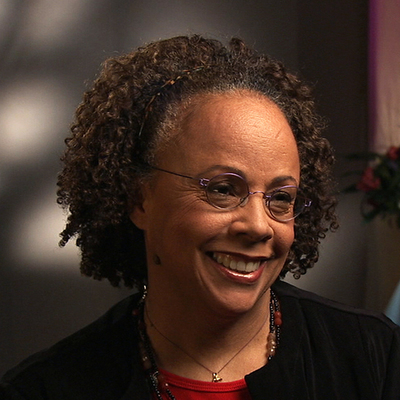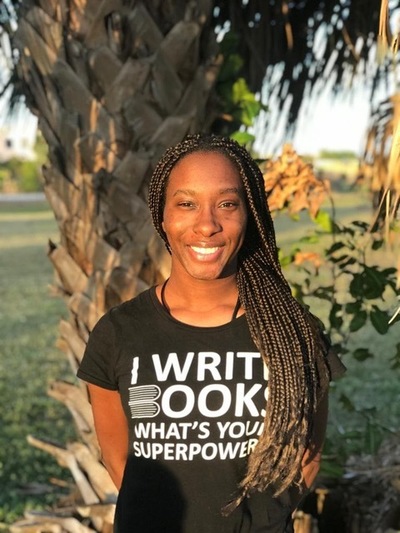When I was in middle school, my body changed earlier than many of my classmates’ bodies did.
Suddenly, I was “developed,” as grown-ups put it.
Suddenly, my off-white ribbed turtleneck—the same one several of my friends had, too, because we went to a school with a strict dress code and only had so many options—fit differently than it had before. It fit differently than my friends’ identical shirts did. It clung to brand-new curves and made me feel attractive and mature.
I wasn’t used to being noticed for how I looked. I had a close friend who was the beautiful one people always had crushes on; I was the one boys talked to when they wanted to find out if she liked them back. But when I wore that ribbed turtleneck, I got the dizzying sense that I was becoming a more exciting version of myself.
I wore that shirt once a week, and, honestly, I would have worn it more if I’d thought I could get away with it.
One time when I was wearing the shirt, I noticed the letters “BBC” scrawled on a notebook inside my desk. A couple of other girls found the same letters written on their stuff, too. A sweet, mortified boy who was in love with my beautiful friend confessed what the letters meant: “Big Boob Club.”
I was pretty sure I was supposed to feel embarrassed and angry when he told us that, but I was flattered. I was in awe of this body of mine that had showed up out of nowhere—this body that I now got to integrate into my understanding of what it meant to be me. I was giddy knowing that these boys who’d never paid attention to me were noticing me now, and I was happy that my beautiful friend was still flat-chested, so none of her things had been touched.
But then something else happened, and that same kind of attention had a very different impact.
I was in 8th grade, and my class went on an outdoor education trip. We did all sorts of bonding activities on the trip, but the big thing—the thing everyone had been talking about for days ahead of time—was rappelling. We all took turns getting hooked into a harness that was clipped onto a rope, and then we had to make our way down a tall vertical wall, trusting that the rope and the person holding it would keep us safe, while our supportive classmates cheered us on from below.
I didn’t want to do it. The year before, on the 7th-grade outdoor education trip, I’d panicked on the ropes course. I’d cried because I was scared to be up so high, and then I’d fallen off a skinny, wobbly bridge. I’d landed in a safety net and hadn’t been hurt, but I’d felt humiliated. No one else in my group had gotten that worked up. No one else had lost their balance.
So I was already terrified that I might humiliate myself again. And then as I stood there at the bottom of the rappelling wall, calling out encouraging things to my classmates and dreading my turn, something became clear.
A bunch of the boys were rating the girls’ butts as the girls rappelled down. They were doling out 2’s and 4’s and 7’s and 9’s.
They were judging this intimate part of each girl’s body that was on display because of the vulnerable, awkward position we had to take coming down that wall. They were using some inscrutable criteria to pass judgment on our bodies.
I had to take my turn when my name was called. I had to make my way down that terrifying wall, battling my anxiety about looking like a wimp again and my worry about what these boys would see when they looked at my body from that angle—whether they would judge me favorably or not.
Before, I’d felt powerful to know that people were looking at my body; now, I was powerless. I felt sick, but I didn’t think I was supposed to. Everybody else seemed to find the situation funny.
My new middle grade novel Up for Air is about a 13-year-old girl named Annabelle who is a star swimmer, a struggling student, a conscientious friend and an “early bloomer.”
During the summer before 8th grade, Annabelle is asked to join the high school swim team. And when she wears a flattering new racing suit, she gets positive attention because of the way her body has developed. That attention thrills her, especially when it comes from Connor, an older boy she has a crush on. Especially because she’s coming off a school year that made her feel terrible about herself.
But that same attention also sets her up for some situations she’s not quite ready to handle—situations that leave her feeling powerless and embarrassed for doing things “wrong.”
It’s complicated, what happens when a middle school girl’s body changes and people treat her in a new way. I know that from my own life, and I know that because I taught 6th, 7th and 8th grades for 10 years and watched many girls navigate similar experiences.
But it isn’t easy to find novels that address this reality. Goodbye Stranger by Rebecca Stead is a wonderful exception, and my students and I were tremendously grateful for that book and the conversations it helped us have.
But if, by and large, middle grade novels don’t explore the intense, confusing feelings and situations that come along with puberty, what message are we sending to adolescents about which topics are important and how they should behave?
I wrote Up for Air in part because I don’t want kids to have that sense I had—that there were certain things I wasn’t supposed to feel or talk about. I don’t want kids to internalize the message that girls’ physical development is embarrassing and somehow “inappropriate” to discuss. I don’t want them to believe that girls should feel shame if they don’t handle sexualized attention “right.”
In Up for Air, Annabelle gets caught up in the way other people see her—as I did, and as all of us do at times. There is a power imbalance between Annabelle and Connor, and readers will likely recognize it before she does. Annabelle messes up a lot—with Connor, with her friends and with her family. She is vulnerable and she is strong.
Annabelle is not strong in spite of the mistakes she makes and the ways she misunderstands Connor’s intentions. She is strong because she endures these experiences, learns from them and ultimately claims her own kind of power that’s more about how she sees herself than how other people see her.
I hope the kids who read this book will feel Annabelle’s joy, despair, embarrassment and triumph right alongside her.
I hope it will help readers think about how they can claim their own power on their own terms and how they can make sure they don’t act in ways that take power away from someone else at a time when so many things feel intense and new and embarrassing.
Up for Air is a book I wanted to read when I was in middle school and wanted to give to many of the students I taught. I hope Annabelle’s story will send the message that we can talk about the social and emotional changes that accompany the physical changes of puberty. We have to because they are thrilling and empowering and isolating and scary.
I hope it provides an opening for those conversations.


























